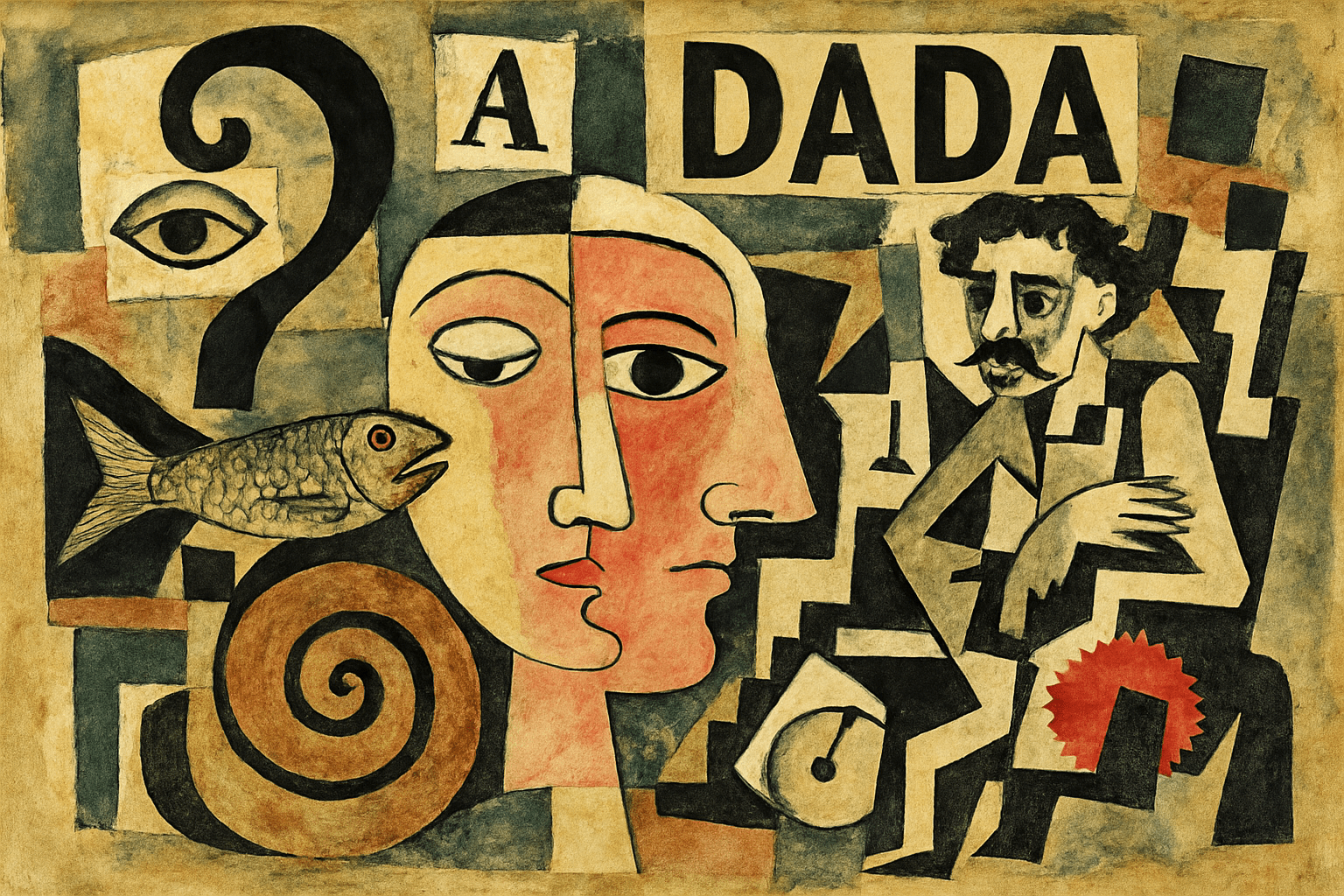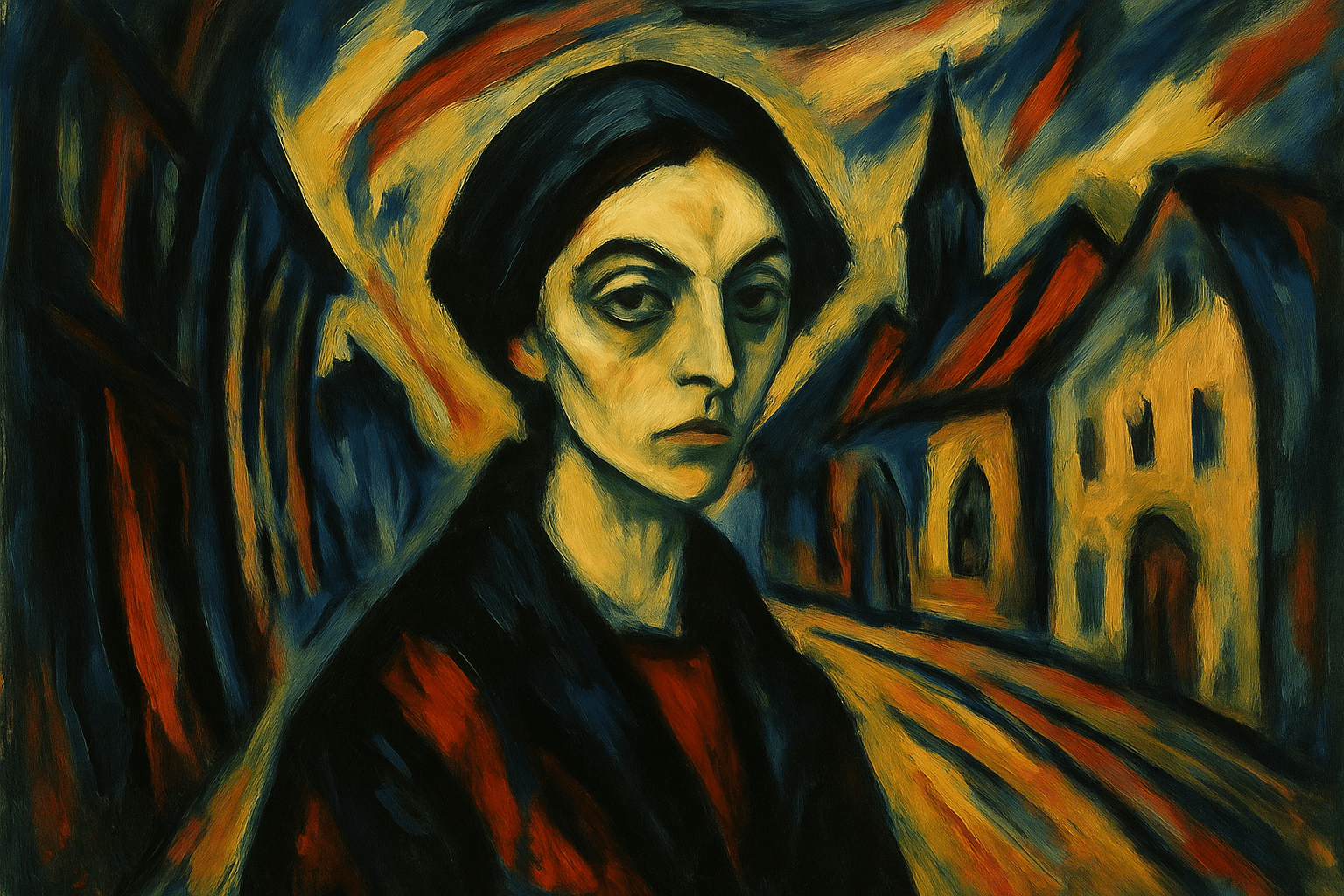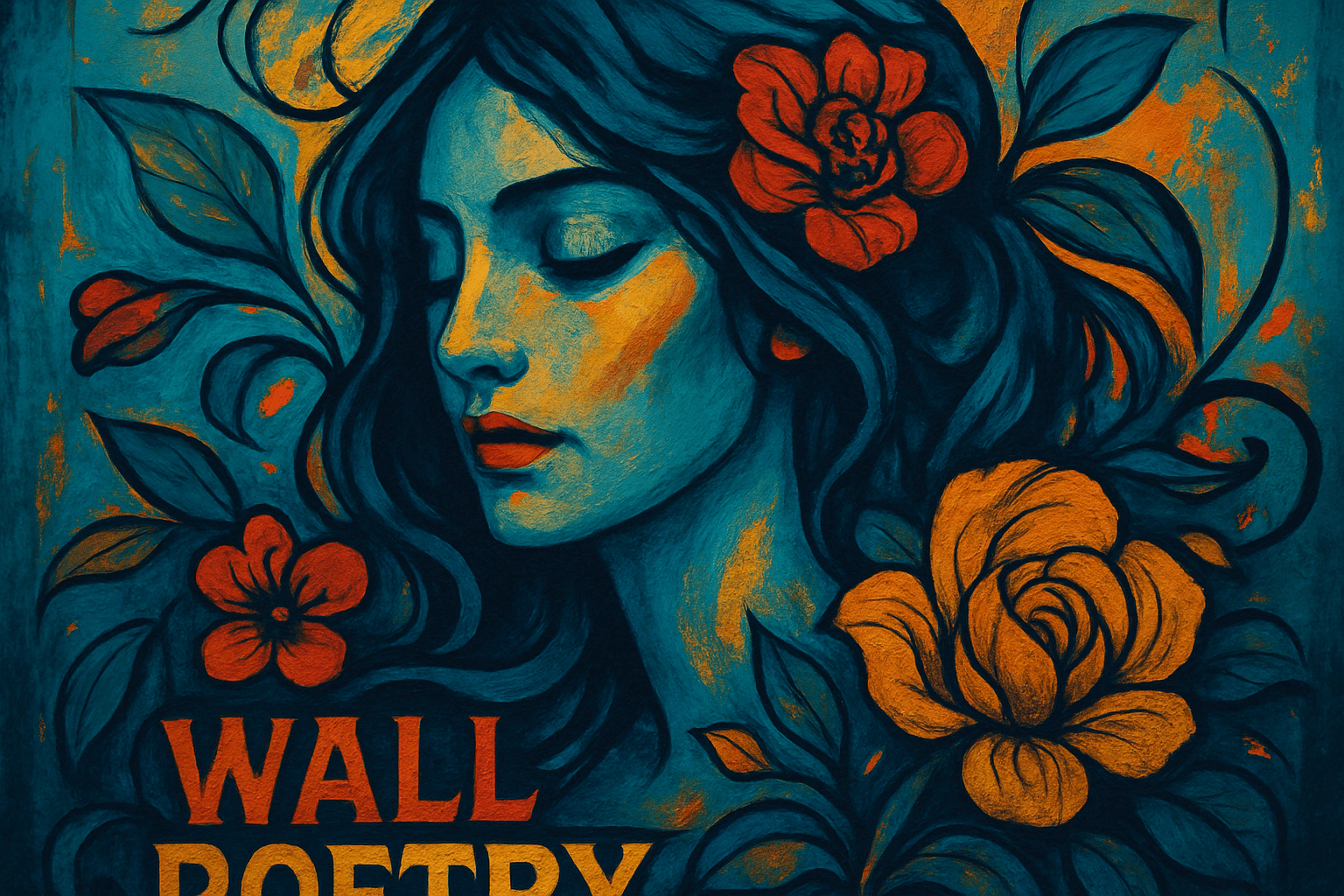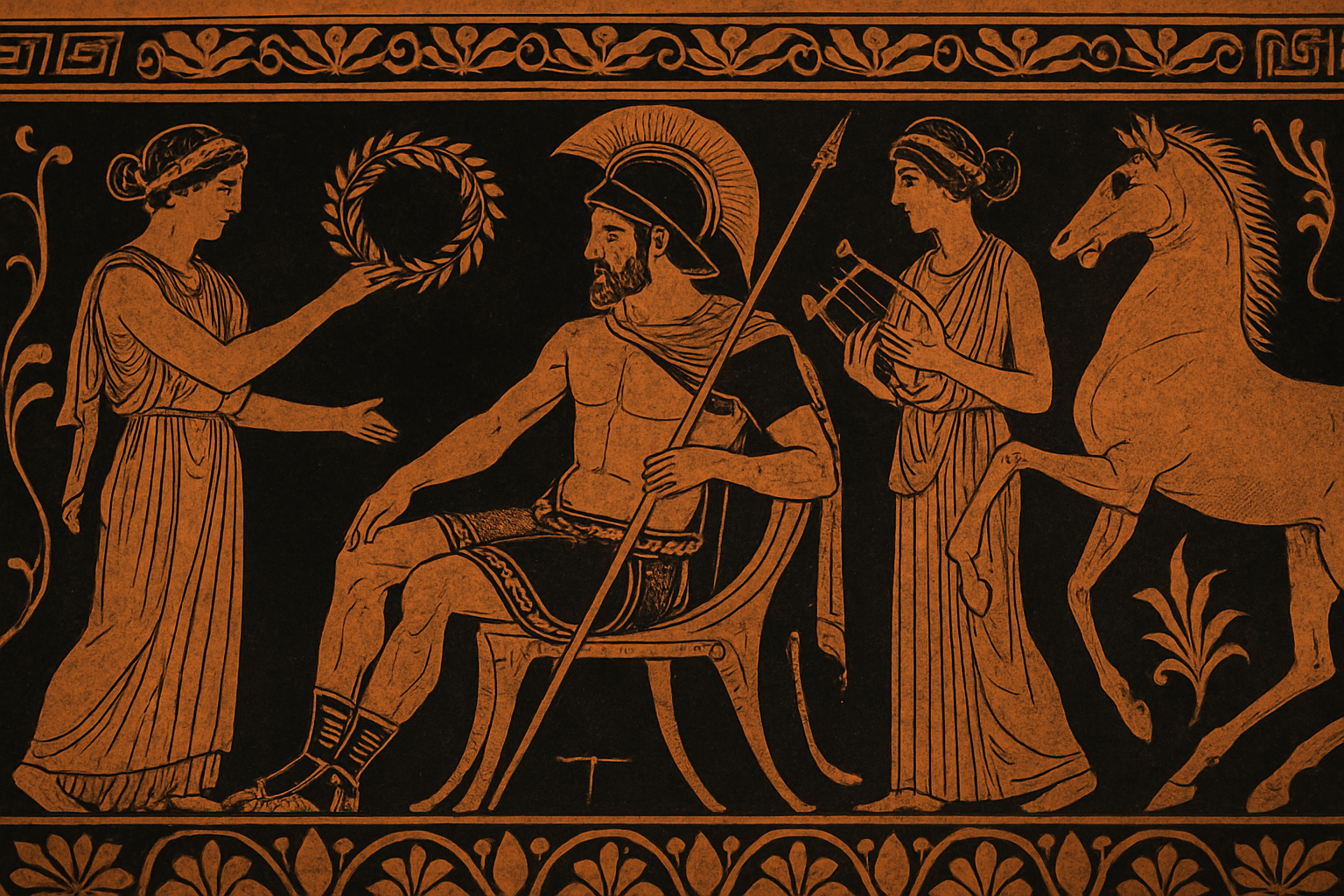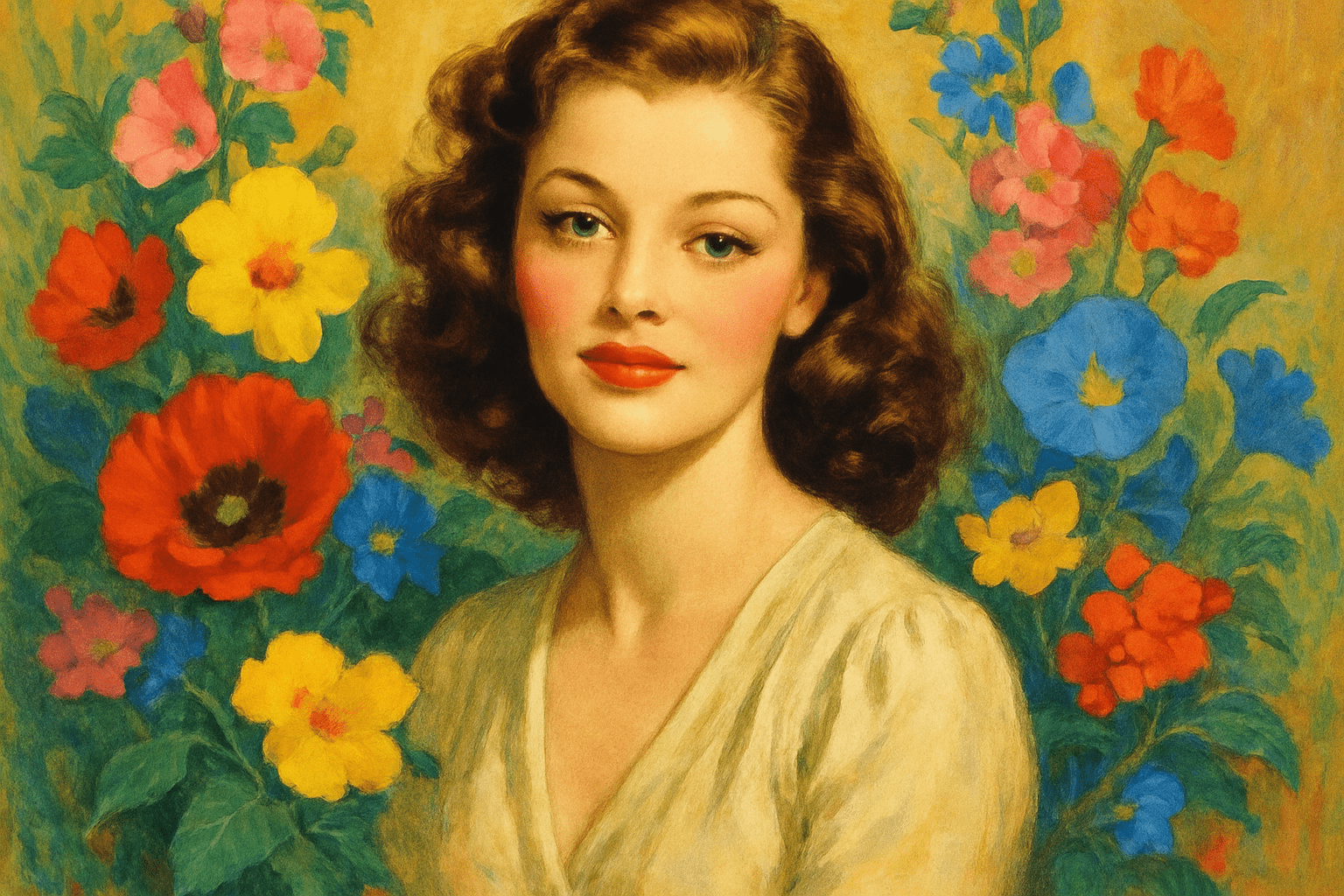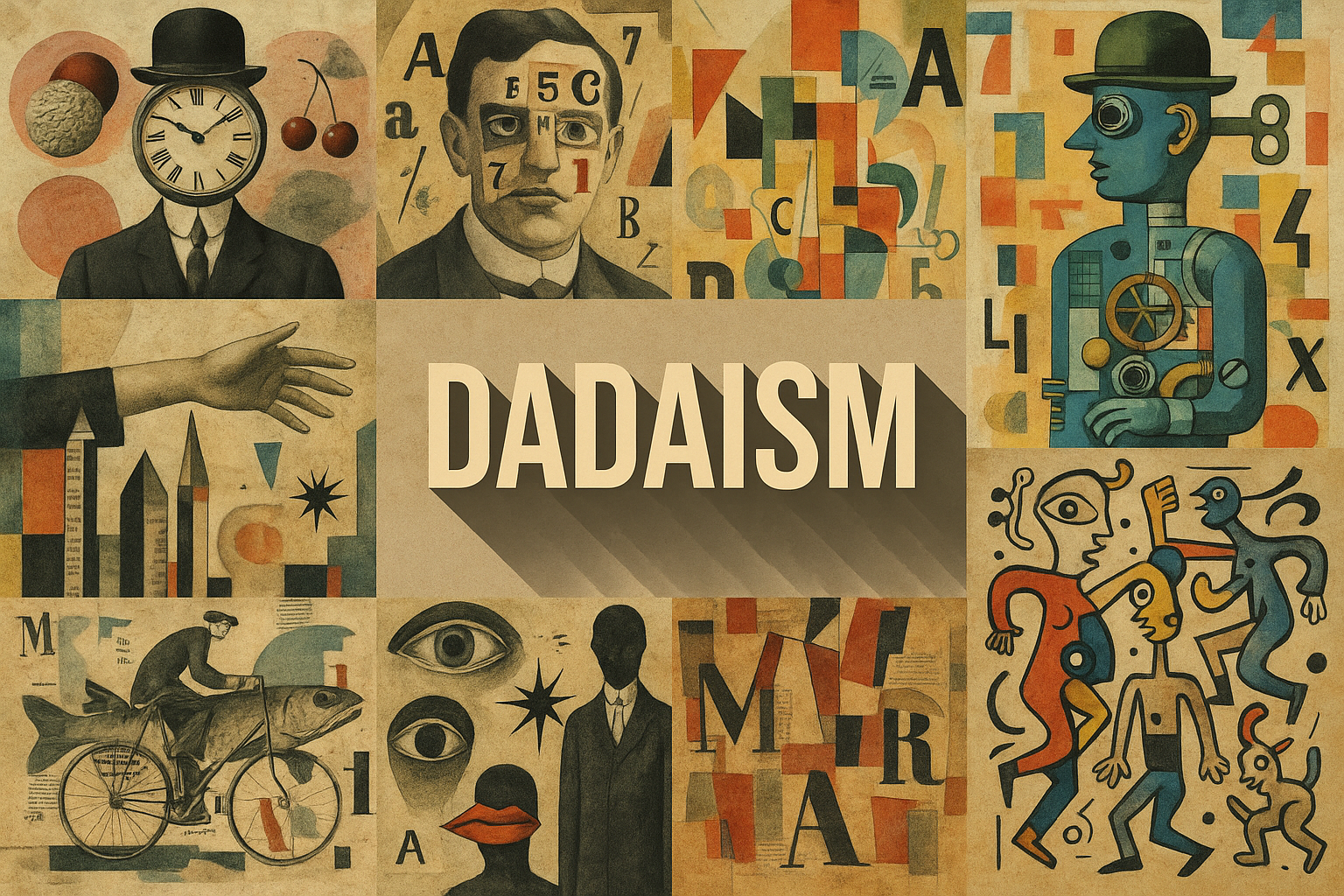
Dadaism
Dadaism is a visual art style that is characterized by its use of randomness, absurdity, and humor. It is often associated with the art movement of the same name.
AOI thinking about Dadaism [+_~]-/
Overview and Quickfacts
Dadaism was a movement in the early 20th century that rejected traditional values and embraced chaos. Dada artists sought to shock and provoke with their art, which often featured elements of chance and nonsense. Dadaism was short-lived but had a lasting impact on the development of modern art.
Can understand it also, as:
Surrealism, Cubism, Futurism, Constructivism, Abstract Expressionism
Categorize it as:
Impressionism, Modernism
.: Dreaming :.
holds a HAIKU for the art style
:. Thought is power .:
Detailed Description
Dadaism is a movement in the art world that began in the early 20th century. It was a reaction to the horrors of World War I, and the Dadaists were artists who believed that the traditional art world was too staid and conservative. They sought to shock and provoke with their art, and they were very successful in doing so. Some of the most famous Dadaist artists include Marcel Duchamp, Francis Picabia, and Kurt Schwitters. Dadaist art is often characterized by its use of found objects, collage, and a sense of humor. One of the most famous Dadaist paintings is Duchamp’s “Fountain,” which is a urinal that he signed and submitted to an art exhibition. The Dadaists were also very active in the world of poetry, and they wrote some of the most innovative and experimental poetry of the 20th century.
.. beep, beep, beep ..
<START OF TRANSMISSION>
1. Dadaism was a artistic and literary movement that emerged in Zurich, Switzerland in 1916. 2. The Dadaists rejected the logic, reason, and aestheticism of modernism. 3. They believed that the only true reality was irrational and sought to expose the hypocrisy of the bourgeois. 4. The Dadaists were anti-war and believed that the First World War was a product of the rationalism that they rejected. 5. The Dadaists were also anti-capitalist and believed that the capitalist system was responsible for the war. 6. The Dadaists were international in their outlook and membership, and their movement spread to other cities such as Berlin, New York, and Paris. 7. The Dadaists were associated with the avant-garde and were influenced by Cubism, Futurism, and Expressionism. 8. The Dadaists used a variety of mediums including painting, sculpture, collage, photomontage, poetry, and performance art. 9. The Dadaists were often critical of the traditional art world and sought to subvert its conventions. 10. The Dadaist movement was short-lived, lasting from 1916 to around 1924. 11. The Dadaists were succeeded by the Surrealists, who shared many of their ideas and principles. 12. The word "Dada" is derived from the French word for "hobby horse" or "child's toy". 13. The Dadaists used chance and randomness in their artworks, believing that art should be spontaneous and expressive. 14. The Dadaists were influenced by the ideas of Sigmund Freud and believed in the power of the unconscious mind. 15. The Dadaists often used shock tactics in their artworks and performances, intending to provoke a reaction from their audience. 16. The Dadaists were associated with the Avant-Garde, and their work often challenged traditional notions of art. 17. The Dadaists believed that art should be accessible to everyone and sought to break down the barriers between art and life. 18. The Dadaists were often critical of the institutions of art and sought to subvert them. 19. The Dadaist movement was short-lived, but its influence can still be seen in contemporary art. 20. The Dadaists were a diverse group of artists who challenged the conventions of art and culture.
<EOF>
.. robbel bob
Visual Examples from our image gallery
Coming soon, we are so slow .. might never come
Artists, Paintings, and more
(be aware, can be highly speculative)
Artists (be aware, speculation possible):
1. Marcel Duchamp (1887-1968) 2. Francis Picabia (1879-1953) 3. Man Ray (1890-1976) 4. Kurt Schwitters (1887-1948) 5. Hans Arp (1886-1966) 6. Sophie Taeuber-Arp (1889-1943) 7. Jean Arp (1886-1966) 8. Max Ernst (1891-1976) 9. George Grosz (1893-1959) 10. Hannah HÃÂöch (1889-1978) 11. Raoul Hausmann (1886-1971) 12. Johannes Baader (1870-1927) 13. Richard Huelsenbeck (1892-1974) 14. Tristan Tzara (1896-1963) 15. Hugo Ball (1886-1927) 16. Emmy Hennings (1885-1948) 17. Dada Woof Papa Hot (1920-1923) 18. Elsa von Freytag-Loringhoven (1874-1927) 19. Baroness Elsa von Freytag-Loringhoven (1874-1927) 20. Marcel Janco (1895-1984) 21. Hans Richter (1888-1976) 22. John Heartfield (1891-1968) 23. Hannah HÃÂöch (1889-1978) 24. George Grosz (1893-1959) 25. Wifredo Lam (1902-1982) 26. Frida Kahlo (1907-1954) 27. Diego Rivera (1886-1957) 28. David Alfaro Siqueiros (1896-1974) 29. Rufino Tamayo (1899-1991) 30. JosÃÂé Clemente Orozco (1883-1949)
Artworks (be aware, speculation possible)
1. “Fountain” by Marcel Duchamp (1917) 2. “Portrait of an Artist (Self-Portrait as a Fountain)” by Marcel Duchamp (1923) 3. “L.H.O.O.Q.” by Marcel Duchamp (1919) 4. “The Bride Stripped Bare by Her Bachelors, Even” by Marcel Duchamp (1915-1923) 5. “Nude Descending a Staircase, No. 2” by Marcel Duchamp (1912) 6. “The Dada Room” by Hans Arp (1916-17) 7. “The Dada Kitchen” by Hans Arp (1916) 8. “The Dada Staircase” by Hans Arp (1916) 9. “Dada Head” by Hans Arp (1920) 10. “Collage with Squares Arranged According to the Laws of Chance” by Hans Arp (1916) 11. “Portrait of Tristan Tzara” by Hans Arp (1920) 12. “Portrait of Hugo Ball” by Hans Arp (1920) 13. “Portrait of Emmy Hennings” by Hans Arp (1920) 14. “Portrait of Marcel Duchamp” by Hans Arp (1920) 15. “Portrait of Max Ernst” by Hans Arp (1920) 16. “Mountain in the Form of a Table” by Max Ernst (1920) 17. “The Elephant Celebes” by Max Ernst (1921) 18. “A Week of Kindness” by Max Ernst (1934) 19. “The Hat Makes the Man” by Max Ernst (1920) 20. “Two Children Are Threatened by a Nightingale” by Max Ernst (1924) 21. “The Robing of the Bride” by Max Ernst (1940) 22. “The Virgin Spanking the Infant Jesus in Front of Three Witnesses” by Salvador Dali (1940) 23. “Soft Watches” by Salvador Dali (1933) 24. “The Persistence of Memory” by Salvador Dali (1931) 25. “The Great Masturbator” by Salvador Dali (1929) 26. “The Surrealist Woman” by Salvador Dali (1938) 27. “The Enigma of William Tell” by Salvador Dali (1933) 28. “The Enigma of Hitler” by Salvador Dali (1939) 29. “Atavism at Twilight” by Salvador Dali (1933) 30. “Dream Caused by the Flight of a Bee Around a Pomegranate a Second Before Awakening” by Salvador Dali (1944)
Epoch
Dadaism was an art movement that began in the early 20th century.
AI ART RESSOURCES (AKA, well Tools)
Helping tools -> predefined search links on other pages:
